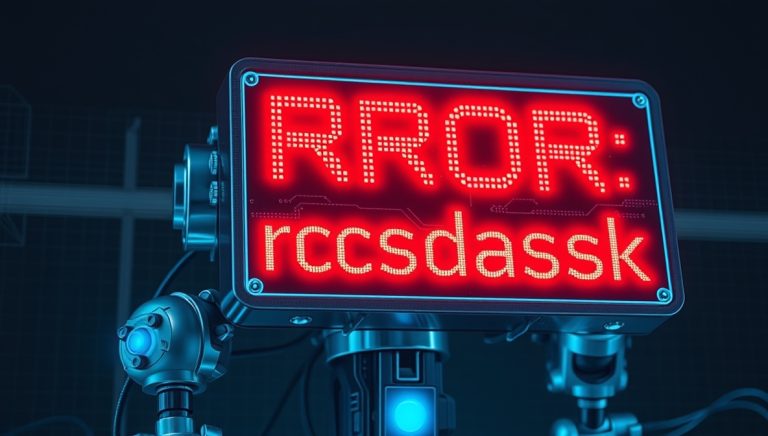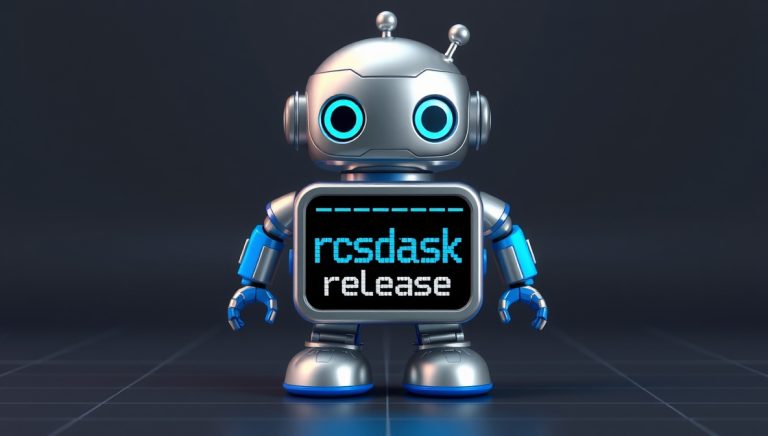Software Error RCSDASSK: Causes, Impacts, and Effective Solutions
Technology has advanced rapidly in the last few decades, yet no system is flawless. Even with powerful computing systems, smart applications, and automation tools, problems arise that can disrupt processes and leave both individuals and businesses searching for solutions. Software error rcsdassk is one such issue that has attracted attention among IT professionals and users because of its unpredictability and complexity. When a technical error arises unexpectedly, it not only interrupts productivity but also causes confusion as to how it should be handled.
This article explores the concept of software-related errors in depth, analyzing causes, consequences, troubleshooting methods, and preventive measures. Along the way, we will evaluate real-world implications, examine how organizations handle these challenges, and provide a roadmap for individuals and businesses who wish to protect their systems from future disruptions.
Understanding the Nature of Software Errors
Software applications are built from thousands or millions of lines of code. Each line must function as intended, and any deviation can create anomalies. Software error rcsdassk often emerges when instructions within a program conflict or fail to execute as planned. While some errors are minor and can be ignored, others disrupt entire systems, leading to downtime or data corruption.
To truly understand such errors, it is important to differentiate between bugs, glitches, and critical failures. A bug is a coding mistake that might produce unexpected outcomes. A glitch is usually temporary and might not require intervention. A critical failure, however, shuts down or severely limits operations, often demanding immediate action. The error in focus belongs to this broader spectrum and illustrates how delicate the balance of coding precision can be.
Common Causes Behind Software Errors
Every error has a root cause, and identifying it is crucial for effective resolution. Software error rcsdassk can result from multiple factors, many of which are interconnected. Below are some of the most common causes:
- Coding Mistakes – Developers may overlook small mistakes during the coding process, leading to problems once the software is deployed.
- Compatibility Issues – Software built for one operating system may malfunction on another due to structural incompatibility.
- Hardware Conflicts – Sometimes the error arises when the hardware is unable to support the processing requirements of the program.
- Updates and Patches – Ironically, the very updates meant to fix vulnerabilities or improve performance can introduce new errors.
- User Misconfigurations – Inexperienced users may inadvertently misconfigure software, triggering unexpected behavior.
Understanding these causes helps both individuals and organizations adopt preventive strategies to minimize risks.

The Human and Business Impact
Errors in software can have wide-ranging implications. Software error rcsdassk disrupts not only the technical side of systems but also impacts human efficiency and organizational operations.
For businesses, downtime often translates into financial loss. If an error prevents employees from accessing databases or communication platforms, productivity declines rapidly. For example, in industries like healthcare or finance, where decisions rely heavily on real-time information, even small disruptions can have severe consequences.
For individuals, the experience can be frustrating and time-consuming. Personal devices may freeze, lose data, or prevent essential tasks like sending emails or accessing accounts. In some cases, errors even cause security vulnerabilities, exposing sensitive information to threats. The human element highlights why organizations invest heavily in IT support and backup systems.
How Errors Spread Across Systems
In many cases, a problem is not isolated to a single device. Software error rcsdassk demonstrates how a small misstep in one program can ripple across entire networks. When enterprise systems are interconnected—covering finance, human resources, and customer databases—an error in one module can cascade into multiple departments.
Modern organizations rely on integrated platforms to manage operations, meaning that even a minor software malfunction can disrupt logistics, communication, and reporting. This domino effect is often why businesses consider error management not only a technical issue but also a matter of strategic planning.
Troubleshooting Approaches
Addressing a software issue requires a structured process. Software error rcsdassk typically cannot be fixed by guesswork alone; it demands a systematic approach to locate and address the source of the problem.
- Diagnosis – Start by reproducing the error and documenting when it occurs. This helps narrow down potential causes.
- Analysis – Review recent changes, such as updates, installations, or configuration adjustments, to identify triggers.
- Testing – Implement controlled experiments by disabling features, reverting settings, or running the program in safe mode.
- Resolution – Once the cause is found, apply targeted solutions—whether through patches, reinstallation, or reconfiguration.
- Verification – Test the system again to ensure the issue does not recur.
This step-by-step framework improves efficiency in troubleshooting while reducing the risk of making matters worse. codes error rcsdassk
Real-World Examples
The global software industry provides numerous cases where errors disrupted services on a massive scale. Software error rcsdassk echoes similar patterns of unpredictability and disruption. Consider these scenarios:
- Airline Systems: On several occasions, airlines have had to ground flights because ticketing or scheduling systems crashed. Even a few hours of downtime caused millions in losses.
- Financial Institutions: Banking applications that temporarily froze left customers unable to access their funds, sparking widespread dissatisfaction.
- Healthcare Technology: Errors in hospital systems have delayed treatments or diagnostic processes, raising risks to patient safety.
These examples show how small technical issues can scale into public crises.
Prevention is Better Than Cure
Avoiding errors is often more cost-effective than fixing them afterward. Software error rcsdassk reminds developers and users that preventive strategies are essential. Key preventive measures include:
- Rigorous Testing: Thorough testing before release helps detect hidden vulnerabilities.
- Regular Maintenance: Continuous monitoring and timely patching prevent problems from escalating.
- Training Users: Educating employees and users about correct software handling reduces accidental triggers.
- Backup Systems: Creating backups ensures critical data remains safe even during disruptions.
By embedding prevention into daily practice, organizations reduce the chances of recurring software issues.
The Role of Developers
Programmers and software engineers carry the responsibility of creating reliable systems. Software error rcsdassk highlights the importance of disciplined development processes. Developers must adopt best practices such as modular coding, peer reviews, and version control. These practices ensure that errors are spotted and corrected before reaching end-users.
Furthermore, developers need to remain vigilant about security concerns. Hackers often exploit software vulnerabilities for malicious purposes. By fixing errors quickly and releasing timely patches, developers protect not only systems but also end-user trust.
Organizational Strategies for Error Management
Large organizations cannot rely on ad-hoc responses to software failures. Software error rcsdassk demonstrates the necessity of robust IT management policies. Companies often establish dedicated helpdesks, escalation protocols, and disaster recovery plans to handle unexpected challenges.
For example, multinational corporations often invest in redundancy systems—where a backup server automatically takes over when the primary one fails. Such strategies minimize downtime and maintain customer confidence. Similarly, service-level agreements (SLAs) with software vendors ensure accountability and timely resolution.
Psychological Impact on Users
Technology errors do not just create technical challenges; they also influence human psychology. Software error rcsdassk often leads to frustration, anxiety, and even distrust of digital systems. Users may feel powerless when applications they rely on suddenly fail.
For businesses, these psychological effects can erode customer loyalty. If customers repeatedly encounter technical issues, they may switch to competitors. Thus, addressing not only the technical side but also the emotional experience of users is critical in today’s digital economy.
Future of Error Management
As technology evolves, so too will error management strategies. Software error rcsdassk represents a type of challenge that will become more complex as artificial intelligence, cloud computing, and the Internet of Things expand. With greater connectivity, even small issues can produce larger ripple effects.
To counter this, the industry is moving toward automated error detection and self-healing systems. These solutions use AI to predict failures, fix minor issues without human intervention, and alert professionals only when major problems arise. This futuristic approach ensures greater resilience in global IT systems.
International Relevance
Errors in software are not confined to one region or industry. Software error rcsdassk has relevance worldwide because nearly every country relies on technology for daily operations. In the United States, for instance, organizations ranging from government institutions to private enterprises invest heavily in cybersecurity and error management because disruptions can affect millions of people instantly.
Different nations may adopt varying strategies, but the universal truth is that no system is completely immune from errors. The global nature of technology means that lessons learned in one part of the world often benefit others.

Conclusion
Technology offers immense benefits, yet it remains imperfect. Software error rcsdassk serves as a reminder that every system, no matter how advanced, can face unexpected setbacks. By understanding causes, impacts, and preventive measures, individuals and organizations can respond more effectively when errors occur.
Troubleshooting processes, real-world examples, and global strategies reveal that managing errors is not simply a technical task but a human and organizational challenge as well. As we look to the future, automated solutions and improved practices promise greater stability. Still, the responsibility lies with developers, IT teams, and users alike to minimize risks and maximize trust in digital systems.
In the end, the presence of errors does not diminish the value of technology but highlights the continuous journey of improvement that drives innovation forward.






